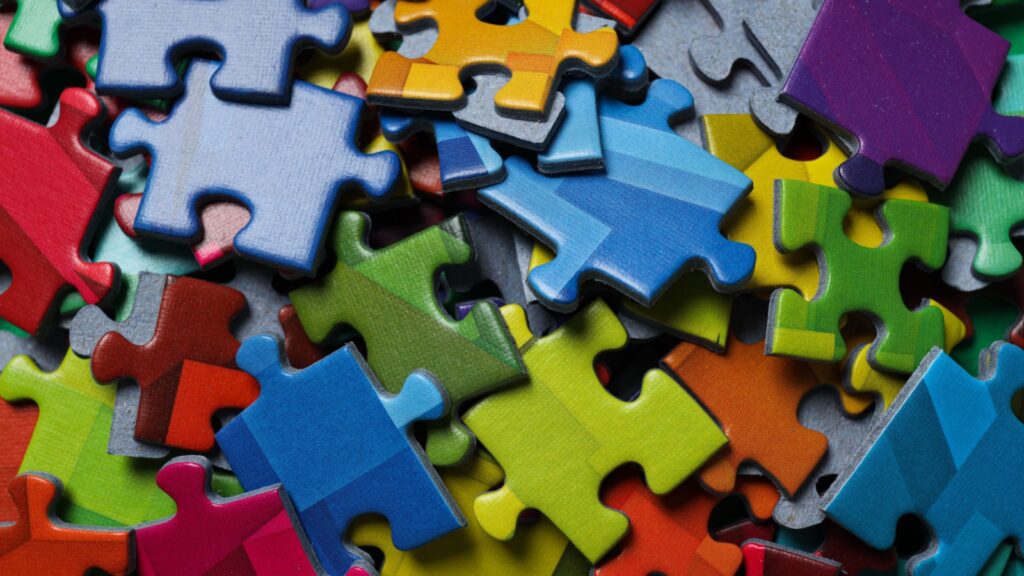
For those who revel in the challenge and satisfaction of puzzles, here’s a collection of intriguing facts that trace the journey and evolution of puzzles. Whether you’re well-versed in the lore of jigsaws or simply curious about the pieces that compose this captivating world, these insights are bound to enrich your appreciation for this timeless activity.
How It All Started
In 1760, John Spilsbury, a mapmaker with a vision, forever changed the world of education and entertainment. To aid in teaching geography to children, he mounted a map onto wood, slicing it along national boundaries to create the first puzzle. This innovative teaching tool soon expanded to encompass a range of subjects, including the alphabet, botany, history, and zoology, marking the birth of an enduring educational resource.
From Dissected Maps to Jigsaw Puzzles
Initially known as “dissected maps,” these early puzzles served educational purposes, allowing students to piece together geographic regions. As technology and crafting methods evolved, so did the name, eventually becoming known as “jigsaw puzzles.” This shift reflected changes in the puzzles’ themes and the intricacies of their design.
Enigmatology: The Study of Puzzles
The formal study of puzzles, known as enigmatology, encompasses various types, including mathematical, logical, and word-based puzzles, alongside jigsaws. Will Shortz, renowned crossword puzzle editor, uniquely tailored this area of study at Indiana University, becoming the only person to hold such a specialized degree.
America’s Favorite Table Game
In the U.S., jigsaw puzzles reign supreme over other table games, with a staggering 1.8 billion puzzles sold annually. This widespread enthusiasm led to the establishment of International Puzzle Day in 1995, celebrating the joy and community puzzles bring into our lives.
A Pastime of the Privileged
In their early days, puzzles were luxury items, handcrafted and accessible mainly to the affluent. Among the earliest beneficiaries of John Spilsbury’s puzzles were the children of King George III and Queen Charlotte. The materials and tools necessary to produce jigsaws were costly, and each puzzle was painstakingly handmade, so regular folks simply couldn’t afford them.
Jigsaws Were Never Used to Make Jigsaw Puzzles
Here’s an interesting linguistic twist for you: Despite their name, “jigsaw puzzles” have never actually involved the use of a jigsaw in their creation. The preferred tool since the 1880s has been the fretsaw, yet “fretsaw puzzle” never caught on.
Biggest Puzzle Ever
Imagine a jigsaw puzzle so vast it covers more area than an average room and consists of over half a million pieces. That’s exactly what a dedicated team of 300 puzzle enthusiasts tackled, assembling a colossal jigsaw that stretched 27 feet by 6 feet. This monumental achievement tested the limits of patience and collaboration and set a record for the world’s biggest jigsaw puzzle.
Boosting Brain Health with Puzzles
Puzzles are more than just a way to pass the time; they’re brain boosters. Engaging in puzzle activities enhances various cognitive functions, including mood elevation, mental reasoning, spatial awareness, and memory sharpness. Plus, puzzles are excellent tools for stress reduction, providing a significant mental exercise that could potentially raise your IQ by a few points.
Are you a Dissectologist?
Those who immerse themselves in the world of jigsaw puzzles proudly bear the title “Dissectologists.” This unique term springs from the early days of puzzles, which were initially known as dissected maps. The community of puzzle enthusiasts stretches worldwide, with the UK-based Benevolent Confraternity of Dissectologists (BCD) uniting members across continents.
Fastest Puzzle Completion
The art of puzzle-solving has seen some remarkable achievements, including the fastest jigsaw puzzle completion. Tammy McLeod set a world record by completing a Guinness World Records puzzle in just under 10 minutes on December 26, 2020, beating the prior record set in 2014.
There’s a Puzzle Mansion
For those who find joy in puzzles and travel, The Puzzle Mansion in the Philippines is a treasure trove worth exploring. Holding the Guinness World Record for the largest collection of puzzles, this unique museum boasts over 1500 puzzles, ranging from historical to contemporary themes, offering a deep dive into the puzzle world.
Repurposing Puzzles
The journey of a puzzle doesn’t have to end once the final piece is placed. There are numerous creative ways to repurpose completed puzzles, from transforming them into wall art to using individual pieces in various craft projects. Donating finished puzzles is another wonderful way to share the joy with others.
The Quadratic Increase in Puzzle Complexity
A fascinating aspect of puzzles is the exponential growth in difficulty as the piece count increases. A 1000-piece puzzle isn’t just twice as hard as a 500-piece puzzle; it’s four times more challenging. This complexity adds an extra layer of satisfaction upon completion, rewarding patience and perseverance.
Puzzles as Marketing Tools
Throughout history, puzzles have evolved from educational tools to marketing instruments. Companies have utilized puzzles for advertising, featuring product images or including them as freebies. This innovative approach has made puzzles a medium for brand engagement and promotion.
Puzzles and the Stars
Celebrities are just like us—especially when it comes to loving puzzles. From Patrick Stewart and Hugh Jackman to Bill Gates and even the late Queen Elizabeth II, many well-known figures find solace and joy in the challenge of completing a jigsaw puzzle, reminding us that puzzles are a universal source of enjoyment and relaxation.
Katy Willis is a writer, master herbalist, master gardener, and certified canine nutritionist who has been writing since 2002. She’s finds joy in learning new and interesting things, and finds history, science, and nature endlessly fascinating.
